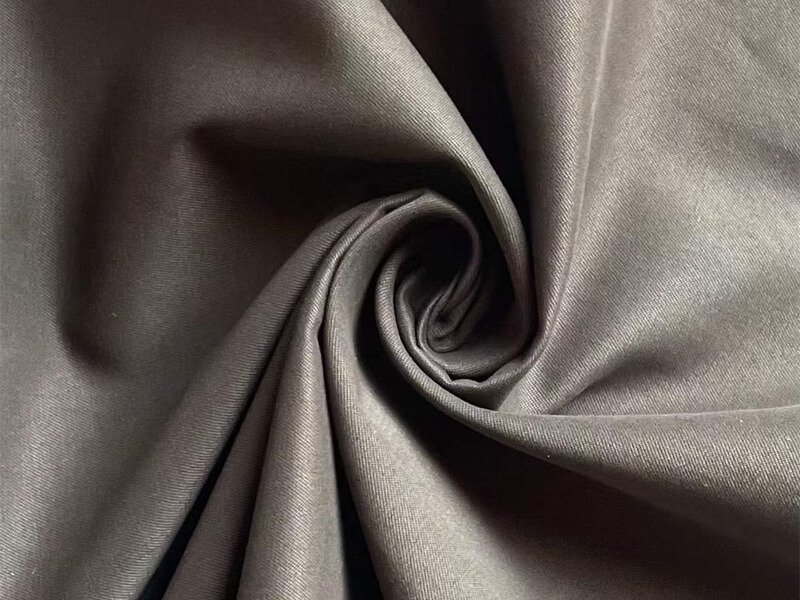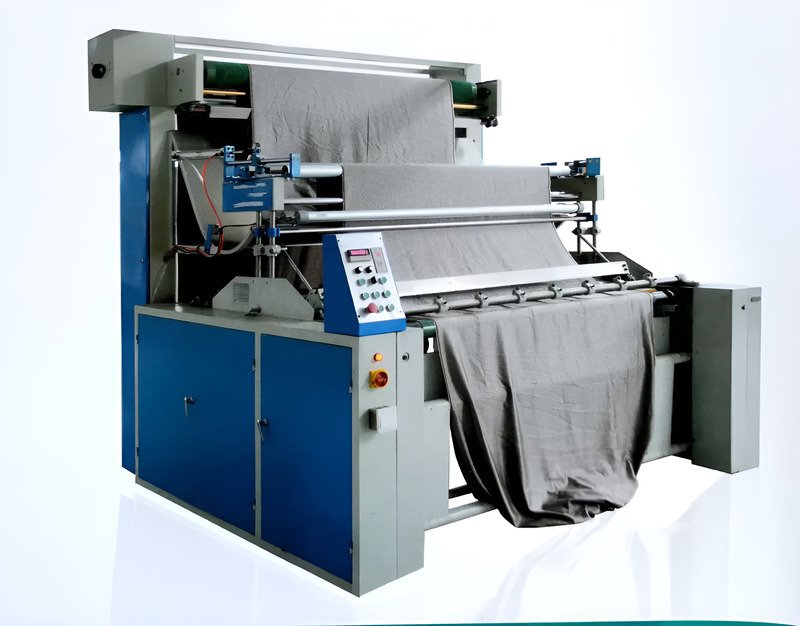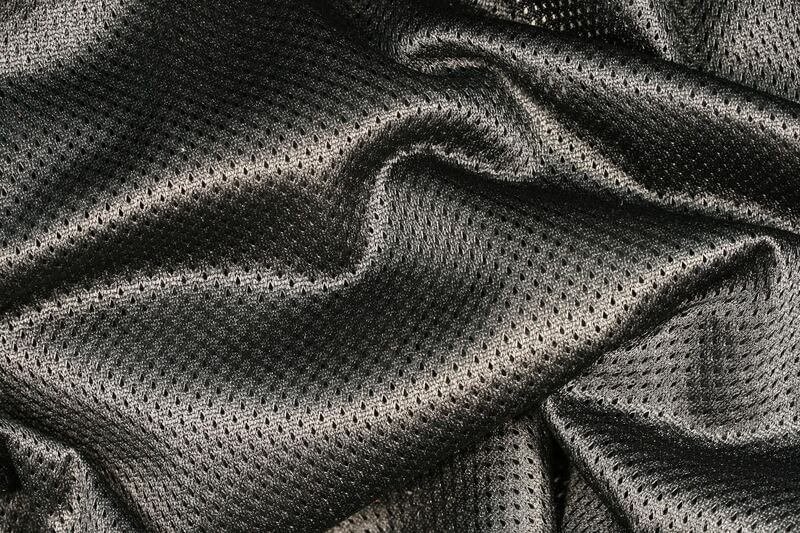What is Fabric Finish? Simple Guide to Textile Touch and Look
Fabric finishes are like special treatments that give clothes and other textiles their unique feel and appearance. This simple guide will explain “fabric finish” in easy terms. Understanding these finishes helps you choose the right fabric for anything, from your favorite t-shirt to thinking about branding items like custom labels from Packlove.
This guide is for everyone, no matter how much you know about fabrics. You’ll learn what fabric finishes are, why they matter, and how they can make fabrics better. Knowing this can help you appreciate your clothes more and make smarter choices.
1. What are we talking about?
1.1 What is a “fabric”?
A fabric is a material made from threads or fibers. These threads are woven or knitted together to create cloth. We use fabrics for many things, like clothes, curtains, and bags. Common examples of fabrics include cotton, polyester, and nylon.
1.2 What is a “finish” in general?
Think of a “finish” as an extra touch that changes something. For example, icing on a cake changes its look and taste. Paint on a car changes its color and helps protect it. A finish is an added layer or treatment that improves or alters the original item.
1.3 The special treatments for textiles
So, a fabric finish is a special treatment given to a fabric. This treatment happens after the fabric is made. The main reason for a fabric finish is to change the fabric in some way – maybe how it looks, how it feels, or even what it can do. These are textile treatments that enhance the material.

2. What exactly is a fabric finish?
2.1 Changing the fabric after it’s made
A fabric finish is a process or treatment applied to fabric after it has been woven, knitted, or made in another way. It’s an extra step. While the type of fiber or how the fabric is woven is important, a finish adds new qualities. The main purpose of a fabric finish is to change the fabric’s properties, like its look, feel, or function. This effect is what makes finished fabrics unique.
2.2 Why do we use fabric finishes?
There are several big reasons why fabrics get finishes.
- To make fabric look better (e.g., shinier, smoother): Finishes can greatly improve a fabric’s appearance. They can make fabric shinier, like with glazing. They can add patterns through printing (some prints are considered surface finishes). Finishes can make colors look brighter or deeper. They can also create interesting surface textures through methods like embossing (creating a raised design on a surface). A common goal of fabric finishing is to improve its look.
- To make fabric feel better (e.g., softer, more comfortable): Fabric finishes can change the texture, or how it feels to touch. They can make rough fabrics feel much softer and increase comfort using softening agents or brushing. Stiff fabrics can be made more flexible. Knowing how a fabric finish changes the fabric’s feel helps in choosing comfortable clothing.
- To make fabric do special things (e.g., resist water, not wrinkle easily): Finishes can give fabrics special properties. For example, some finishes provide protection by making it water-resistant, perfect for raincoats. Other finishes make fabric anti-wrinkle, so clothes need less ironing. There are also finishes for flame retardancy, stain resistance, and even UV protection. These benefits of fabric finishes add practical value.

2.3 Fabric finishes vs. inherent properties
It’s important to understand that fabric finishes are applied treatments. They are different from the natural qualities of the fibers themselves, like cotton’s natural softness. They are also different from characteristics that come from the fabric’s weave, like the shine of a satin weave.
For example, cotton is naturally absorbent; a waterproofing finish is added to make it repel water. Fabric finishes change fabric characteristics that weren’t there originally.
3. How are fabric finishes applied?
There are two main finish types for applying these treatments to fabrics. The application method, whether chemical or mechanical, determines the outcome.
3.1 Mechanical finishes: using machines and physical methods
Mechanical finishes change the fabric’s surface or structure using physical force, temperature, or machines. This is done primarily without chemicals. Common actions include rubbing, brushing, pressing fabric between rollers (called calendering), applying heat, or compacting it.
Simple examples:
- Brushing: Makes fabrics like flannel soft. Brushing uses wire brushes to lift tiny fibers from the fabric’s surface. This creates a soft, fuzzy texture called a nap. Flannel shirts and fleece jackets often get this finish. It increases softening and warmth.
- Calendering (pressing): Makes fabric smooth and shiny. In calendering, fabric passes between heated rollers under high pressure. This flattens the yarns and the fabric surface. The result is increased smoothness and sheen (shine). Chintz fabric is a classic example.
- Sanforized (pre-shrinking): Stops clothes from shrinking too much. The Sanforized finish is an example that uses a controlled compressive process to pre-shrink fabric. This greatly reduces how much a garment will shrink after washing. It improves the durability of the garment’s fit. You often see this on cotton and denim. At Packlove, we often see ‘Sanforized’ on denim labels; it’s a sign of quality ensuring the garment won’t shrink drastically.

3.2 Chemical finishes: using special liquids or substances
Chemical finishes involve applying special chemical substances to the fabric. These chemicals give the fabric specific new properties. Common ways to apply them include dipping the fabric in a chemical bath (padding), spraying, or coating the surface. Reputable manufacturers use safe chemicals that meet industry standards like OEKO-TEX. Clothing makers use these finishes to create better products.
Simple examples:
- Waterproofing/water-repellent: Keeps you dry. These finishes create a barrier against water. Water-repellence makes water bead up and roll off, often keeping the fabric breathable. Waterproofing provides a more complete barrier. Examples of these finishes include waterproofing for raincoats and outdoor gear.
- Wrinkle-resistant: For easy-care clothes. This finish uses substances like resins to help fabric resist or shed wrinkles. Clothes need less ironing and stay neater, making them anti-wrinkle. It’s great for travel wear and business shirts.
- Flame retardant: For safety. Flame retardant finishes make fabric less likely to catch fire. If it does ignite, it slows down the burning. This protective finish is very important for items like children’s sleepwear and safety clothing.
- Softening agents: For extra softness. Chemical softening agents are applied to give fabrics a softer, more pleasant feel. This increases the softness and comfort of many types of garments.
4. Common types of fabric finishes
There are many types of fabric finishes. Understanding these common finishes for clothes helps you know what to expect from your garments. Specific treatments provide special properties, leading to different outcomes like softness, sheen, or water repellence.

4.1 Finishes for how fabric looks and feels
- Softening: Makes fabric touchably soft. (Examples: t-shirts, baby clothes) Softening finishes create a pleasant, soft touch. This can be done mechanically (like brushing) or with chemical softening agents. It enhances comfort and is key for t-shirts, baby clothes, and bed linens. Many of our Packlove clients request soft labels, like printed satin, for items with softening finishes to maintain overall comfort.
- Mercerization (for cotton): Makes cotton stronger, shinier, and take dye better. (Examples: quality cotton shirts, threads) Mercerization is a chemical treatment for cotton and other similar fibers. It increases sheen, makes the cotton stronger, and helps it take dye better for brighter colors. High-quality cotton shirts and threads often have this finish.
- Napping/brushing: Creates a fuzzy, warm surface. (Examples: flannel shirts, fleece jackets) Brushing is a mechanical finish where wire rollers raise surface fibers. This creates a napped, fuzzy texture. It makes fabrics like flannel and fleece feel soft and warm.
- Glazing/cireing: Gives a very shiny, sometimes waxy or “wet” look. (Examples: some fashion fabrics, some types of bags) This mechanical finish involves pressing fabric with heated rollers, often after applying starch or wax. It creates a very smooth, highly polished appearance with a strong sheen. Cireing gives a “wet” look, often seen on nylon jackets or bags.
4.2 Finishes for fabric performance and protection
- Water-resistant / waterproof: Helps keep water out. (Examples: raincoats, outdoor gear) These chemical finishes provide protection against water. Water-resistant finishes make water bead up, while waterproofing creates a stronger barrier. They are essential for apparel like raincoats and outdoor gear. At Packlove, we know that labels for waterproof gear need careful thought for adhesion; heat transfer labels might need special adhesives, or woven labels sewn on are a safer bet.
- Stain-resistant / soil release: Makes it easier to clean spills. (Examples: tablecloths, kids’ clothes) These chemical finishes provide protection by preventing stains or helping dirt wash away easily. They are great for children’s clothes, workwear, and home textiles like tablecloths.
- Wrinkle-resistant / anti-wrinkle: Helps clothes stay smooth. (Examples: travel clothes, business shirts) This chemical treatment helps fabric resist creasing, meaning less ironing. It keeps clothes looking neat and is ideal for business shirts and travel apparel.
- Anti-pilling: Reduces little fabric balls on sweaters. (Examples: knitwear) Pilling is when small fiber balls form on fabric. Anti-pilling finishes reduce this, keeping knitwear looking newer for longer. This improves the durability of the garment’s appearance.
- Flame retardant: Makes fabric harder to catch fire. (Examples: children’s sleepwear) This chemical finish inhibits fire and slows burning, offering crucial protection. It’s used for children’s sleepwear, mattresses, and protective clothing.
- Anti-static: Reduces static cling. (Examples: linings, synthetic fabrics) Some fabrics, such as polyester and nylon, build up static. Anti-static finishes help dissipate these charges, reducing cling. This is common in linings and synthetic clothes.
4.3 Special finishes
- UV protection: Blocks sun rays. Some chemical finishes absorb or reflect UV radiation. UPF (Ultraviolet Protection Factor) measures this protection. This finish is used in swimwear and outdoor gear.
- Antimicrobial/anti-odor: Stops bacteria and smells. These finishes stop the growth of odor-causing bacteria or neutralize smells. They are often found in activewear and socks.
- Aroma-infusing: Adds scent. Aroma-infusing finishes use tiny capsules to release a scent over time. This is mostly a novelty for some fashion items.
5. How do fabric finishes affect the fabric?

- Changing the look: shiny, dull, smooth, textured: Fabric finishes can dramatically alter a fabric’s appearance. They can increase sheen (glazing, mercerization) or keep a matte look. The surface can be made smoother (calendering) or given a distinct texture (napping, embossing). Colors might look richer and patterns clearer.
- Changing the feel: softer, stiffer, smoother, rougher: The “hand” or texture of a fabric is greatly influenced by finishes. Softness can be significantly increased (softening agents, brushing), improving comfort. Some finishes add stiffness, while others enhance drape. The surface can feel smoother or rougher. Learning how a fabric finish changes the feel of a fabric helps in selecting materials.
- Adding new abilities: water resistance, wrinkle resistance, etc.: Finishes add functional improvements. These include protection (like being water-resistant or stain-resistant), ease of care (like being anti-wrinkle), and enhanced comfort or performance (anti-static, UV protection). These specific finishes provide special properties to the fabric, adding significant value.
- Durability of the finish: some last long, some wear off. The durability varies. Some, like mercerization, are permanent. Many, like good water-repellents, are durable but may lessen over time. Others are temporary and wash out. At Packlove, we advise clients to consider the expected lifespan of their garment and its finish when choosing labels. A high-performance jacket needs a label that lasts.
- Impact on fabric care: do you need to wash it differently? Some finishes need special care to stay effective. For example, you might need to avoid fabric softeners on waterproof items. Always, always check the garment’s care label. This label tells you how to care for finished fabrics, considering the fiber, dye, and any finishes. Packlove understands how vital care instructions are for finished garments.
6. Fabric finishes and your Packlove labels
The finish on a garment can impact which type of label works best.
- Adhesion: Some finishes affect how well heat transfer labels or stickers stick. Certain treatments, like silicone coatings, heavy waterproofing (DWR), oily finishes, or very fuzzy surfaces, can make it hard for heat transfer labels or adhesive patches to adhere well. At Packlove, we’ve seen challenges with heat transfers on fabrics with these treatments. We always ask about finishes to recommend the best adhesive or suggest sewn-in labels.
- Fabric drape & label type: The feel and drape of a fabric, often changed by its finish, should guide your label choice. A very soft, flowy fabric might need a softer printed satin label or a thin heat transfer to maintain comfort and drape, rather than a stiff woven label.
- Durability: The label’s durability should match the garment and its finish. A high-performance outdoor jacket with durable finishes like waterproofing and anti-abrasion needs an equally tough label that can withstand use and washing.

6.2 Packlove can help you choose the right label
- Considering fabric type and its finish: Packlove is here to help. When you order labels, our team will ask about your fabric type and any finishes. This allows us to advise on the best label choice for finished garments. Our team is trained to ask the right questions about your fabric to ensure your labels perform perfectly.
- Ensuring your brand looks great and the label stays put: We are committed to your success, ensuring your brand looks excellent and your labels are functional and durable.
6.3 Special label finishes from Packlove
Packlove offers labels with special finishes. For example, our soft printed satin labels or finely woven damask labels are smooth and non-irritating. They are ideal for garments with soft finishes, like baby clothes or high-quality t-shirts, aligning the label’s feel with the garment’s. Explore Packlove’s woven labels or printed satin labels for options that complement your beautifully finished fabrics.
7. Frequently asked questions (FAQs)
7.1 Is fabric finish permanent?
It varies. Some finishes, like mercerization, are permanent. Many, such as good quality water-repellents, are durable but might lessen after many washes. Some, like temporary softeners, are less durable. The durability depends on the type of finish and fabric.
7.2 Are fabric finishes safe?
Yes, reputable manufacturers use safe, regulated chemicals for fabric finishes. Certifications like OEKO-TEX indicate that fabrics have been tested for harmful substances. At Packlove, we believe in safe products, from fabric to finish to label.
7.3 Can I add a finish to a fabric myself?
Some consumer products, like waterproofing sprays for shoes, are available. However, most industrial fabric finishes need special factory equipment and processes that you can’t replicate at home.
7.4 Do all fabrics have a finish?
Many fabrics you buy, especially for clothes, have some kind of finish. However, fabric can exist in an unfinished state, sometimes called “greige goods” (raw, unbleached, undyed fabric) or PFD (Prepared For Dyeing – fabric that has been scoured and bleached, but not yet dyed or finished). Basic finishes like cleaning (scouring) are very common.
7.5 How do I know what finish my fabric has?
Product tags or online descriptions might tell you (e.g., “water-resistant,” “wrinkle-free”). How the fabric looks, feels, or performs (like water beading up) can also give clues. Most importantly, check the care label, as it provides washing instructions based on the fiber, dye, and any finishes.
Explore more:
Fabric finishes are crucial treatments that truly transform textiles. They add value by enhancing the fabric’s look, feel, and functionality, introducing new capabilities. This treatment adds value to textiles, making them better for specific uses. Understanding these finishes not only helps you appreciate your clothes and textiles more but also empowers you to make better choices when selecting fabrics for clothing.






















